Podcast: Play in new window | Download
Show Notes
Today, we discuss how to save time in your yard with tactics and practices.
Topics:
- Design and Establishment
- Right Plants
- “Low Maintenance” Plants
- Proper planting
- Plan for future
- Growth – roots, branches
- Plant gardens that only need work twice a year
- com/2xgarden
- Good fertility
- Dense planting
- Low maintenance plants
- Wide range of conditions
- Consider clover
- Natural fertilizer
- Plant a naturalized space – less work, rugged beauty
- Maintenance
- Increase time between maintenance routine
- If weekly, try bi-weekly
- Carve out larger chunks of time, less often
- Mowing – cut higher, less often
- Taller grass = more foliage = more photosynthesis = more energy = more roots = healthier grass
- = fewer problems & slower growth
- Stop fertilizing !
- Chemical dependency
- Increase time between maintenance routine
Links for today’s episode:
- Launch Party!
- How to save 27 hours of work
- Consult with Ben
- Paul Tukey
- Rolling River Nursery
- Bring Back that Wild Space
I’m Ben Hale your virtual design guide
to help you and your family have a
healthy beautiful landscape with less
work what is up and welcome to episode 4
of the aesthetic ecosystems podcast
today we’re going to be talking about
time saving tactics for your yard so in
the past couple episodes we talked about
having the right mindset for a
low-maintenance landscape and also what
makes a low-maintenance landscape so
today we’re gonna get into the specifics
a few areas where you can really focus
on to save time in your landscape and
enjoy your life more fully that’s right
if your this is your first episode what
we’re talking about here is saving time
in your landscape and on yard work and
reducing the amount of stress and effort
you have to spend toward your yard work
you get all that time and all that
energy back to do something more
fulfilling with that time let’s do
something more fulfilling with your life
and if that sounds like a stretch then
you have to go and check out my free
giveaway how to save 27 hours of yard
work this season this free giveaway it
talks about just three simple habit
changes you can make in your typical
yard work routine and it can give you
back so much time and all that time can
be spent on doing something more
fulfilling whether it’s spending time
with your family or pursuing some sort
of passion or dream that you have or
just building your life or helping
others all of those things really can
make an impact and just the simple
changes that you can make in your
landscape can lead to something amazing
so let’s get right into it
I’m gonna split what we’re talking about
today into two specific areas first
design and establishment of landscapes
so if you’re working on a new project or
or maybe doing a complete overhaul of
your landscape or maybe you have a new
house you just moved into and and it
needs tons of work and you’re basically
starting from
from step one so we’re gonna talk about
what things you can do with that design
phase to really reduce long term
maintenance needs and then we’re gonna
go into just the maintenance area so
maybe you already have a yard that
you’ve you just want to make a change
with it and without completely
overhauling certain spaces or the whole
yard there are things you can do with
your yard to save time as well so in the
design establishment phase we’re gonna
be talking about having the right plants
low maintenance plants proper planting
planning for the future and maybe even
planning gardens that you only need to
work on them twice a year yeah it sounds
kind of crazy but you can do it I’m
considering options for your lawn as
well as naturalized spaces and what they
can do for you so with the design and
establishment phase having the right
plants can really make a huge impact we
kind of talked about this in episodes
two and three of what makes a
low-maintenance landscape the right
plants are basically plants that are
properly adapted to the conditions of
your garden so if you’re talking and
this could be to your lawn having the
right type of grass that you plant in
your lawn can make a huge difference in
whether or not it needs to have tons of
work of keeping up fertility or removing
disease problems or having the right
amount of water so selecting the right
type of grass for your yard is very
important so make sure you know what
right conditions there are whether it’s
for your lawn or for a garden that
you’re planning make sure you know
what’s what’s the amount of moisture
you’re getting in that specific space so
you can look at your average rainfall
per year and how it happens seasonally
so do you have tons and tons of rain in
one part of year and then it’s dry the
rest of the year or is it pretty well
spread out these can make huge
differences as to whether or not for one
the drought resistance of your plants to
whether or not they’re gonna have issues
with mold and mildew in wet seasons
things like that so you
need to make sure the plants are adapted
to the conditions so aside from water
you also have the right amount of
sunlight in your space the right amount
of the soil fertility all sorts of
things like that that you need to make
sure that the plant you’re considering
is adapted to that specific space and
when I’m talking about this specific
space there’s multiple factors that goes
into that there’s the the overall
climate of your area or your region so
this is your USDA hardiness zone if
you’re not familiar with that the the
USDA came out with this chart quite a
few years ago and essentially it breaks
out the specific regions of the United
States based on the how cold it gets in
the winters and whether plants can
survive that condition so some plant you
plant in Florida might not be able to
survive the winter in Ohio where I live
and vice versa you might have something
that thrives in Ohio with the colder
winters and the hot summers but with the
long hot summers in Florida it might not
have the right amount of heat resistance
or Sun resistance that something in Ohio
might have so it’s important to make
sure your plant is adapted to your
region based on that hardiness zone and
in other large climatic areas like that
so the general moisture of your region
but then also drilling down specifically
to the specific space you’re intending
to plant this plant so you might plant a
plant on one side of your house and it
does great and you might plant it the
same exact plant on the other side of
your house and does horribly and this
could be based on how much Sun it’s
getting how much heat it’s getting at
different times of year the moisture
level so the specific area of your yard
can make an impact too so make sure you
consider both the overall climate area
as well as the specific microclimate of
your space okay so that’s enough on the
right plants as far as the right
conditions also
consider potentially low-maintenance
plants and what I mean by
low-maintenance plants they’re plants
that don’t require a lot of resources
and inputs in general some plants are
really beautiful popular garden plants
but unfortunately they require a lot of
tending to keep either trimmed or well
fertilized or well fed and to keep
looking pretty so when you consider
plants think about the long-term
maintenance of this plant and whether
you know to keep an attractive plant
does it need trimming every year do you
need to prune it to keep it to a certain
size what sort of fertility did you
doesn’t need so it doesn’t require
fertilization every single season to
bloom or something like that and focus
on the plants that don’t require all
those inputs that just naturally once
they’re established they just take care
of themselves
and that’s really great when you’re
talking about a low-maintenance
landscape and wanting to save time so
now that we’ve selected the right plants
for your space as well as plants that
are low maintenance and don’t require
tons of inputs in the long term let’s
consider the right type of planting so
make sure you’re you’re establishing
your plant properly so it gets a good
footing in its new space and is able to
thrive once it’s well established now
I’m gonna be honest here when it comes
to planting and establishment this phase
is very important it’s kind of like like
raising a kid right the most intensive
part of the child’s life is the first
few months when it’s first learning to
grow be part of the world crawl all
sorts of things eat right all sorts of
things well a plant is the same way and
if you’re transplanting an already a
potted plant or something that’s already
been growing somewhere else it needs
that same nurturing and care in its new
space because essentially what you’ve
done is you’ve uprooted the plant you’ve
pulled its its foundation out right and
it’s most likely lost a lot of its roots
very small fibrous roots and and it’s
been growing in a specific condition and
then
placing it in your yard which is most
likely a very different soil condition
and it has fewer roots to keep growing
off of and it might not even be the
ideal time that you’re planting it so
properly taking care of that plant once
you put it in the ground is very
important for the first couple weeks to
even maybe a few months and once it’s
able to get started and take hold and
take root then it’s usually able to
thrive as long as you’ve selected the
right plant for the right place and all
that when it comes to proper planting
there’s a few specific things and and
based on the type of plant you’re
talking about there’s certain nuances
that that differ but in general what you
want to do is usually you want to plant
during the dormant phase of your plant
ideally now this doesn’t mean that you
can’t do it at other times but you just
might have less success or you might
have to take care of it a bit more so
for example for a small tree that you
might be transplanting from say a pot or
burlap or whatever the ideal time for
that is late fall
generally speaking through very early
spring before the buds open this is the
time when the upper growth of the tree
is dormant and if you plant it in late
fall the roots out will actually
continue to develop over the winter as
long as the ground is not frozen so this
gives the plant time to really establish
before that burst of growth during the
next growing season when it’s trying to
take off and compete with other things
around it making sure you take care of
the roots when you’re planting spreading
the roots out before you fill in the
hole and also making sure you’re
planting at the right depth where you
don’t want to plant below where the
plants is already growing because
especially for trees and shrubs this can
cause it quite a bit of damage and even
kill the plant potentially so there’s a
lot of other details but taking care of
the roots making sure you do it at the
right time of year and followed up by a
good watering sequence so make sure
you’re not depending upon the plant make
sure you’re giving the right amount of
water so this could mean if it’s a plant
that’s adapted to
low moisture conditions or average
moisture conditions don’t overwater it
and vice versa if it’s a plant that
requires a certain amount of water make
sure you’re giving it enough moisture at
a good frequency of deep watering to
help it get established and eventually
you you hopefully can kind of wean the
the plant off of the water so slowly
reduce the watering frequency and
quantity so the plant can begin to
establish on its own okay
enough about planting techniques the
next thing you want to do well hopefully
you do this before planting is plan for
the future growth of the plant I see
this happen all the time and it drives
me crazy driving down the street or
walking down through a neighborhood and
I see people plant trees especially
trees is where the biggest problem is
right underneath the power line or right
over an access point that is going it’s
inevitably going to cause problems in
the future when when this tree grows
bigger it needs to be trimmed through
the power line or even topped completely
cut off at the top and that’s just such
a difficult problem because if you had
planted that plant just in a slightly
different location it would be able to
grow freely similarly making sure you’re
spacing your plants properly for growth
a lot of times people I see it all the
time in new shopping centers where they
take these beautiful maples and they’ll
plant them at about ten foot spacing
well a maple tree once it matures it
grows upwards of seventy feet and with a
branch spread almost as wide and these
trees aren’t able to grow in such
proximity to each other so inevitably
what you have to do after a few years is
end up cutting down some of those
central trees to space them out so make
sure you plan for the future both with
the branches and also with the roots so
you don’t want to plant right in your
your leach field of your septic system
you don’t want to plant right over
underground wires or
in incoming gas or electric or water
lines because the roots will inevitably
disrupt that those utilities
similarly you don’t want to plant right
next to your driveway where the roots
are gonna grow underneath the driveway
and break up your concrete or also one
additional piece is your foundation a
lot of people love planting close to the
foundation it looks real nice
selecting the right plant to do that is
very important because if you select a
plant where the roots spread out they’re
going to attack your foundation it’s
going to cause problems either with
settling or with disruption of the
foundation itself so another cool thing
you can do is kind of reach a target
goal when you establish a new garden
space that it might only need work twice
a year how cool would that be right you
can just totally forget about it during
the peak summer when you’re just trying
to relax and not get too warm outside
and vice versa in the winter you can
just kind of leave it alone and it
actually looks nice at the same time so
when I mean twice a year you do it one
day in the fall one day in the spring
and that’s it you can totally leave it
go the rest of the year now it’s kind of
a stretch goal but it is possible and
there are certain factors to consider
here I actually have a a cool article on
this if you go to aesthetic ecosystems
calm / 2x garden that’s the number 2
letter X garden for twice a year garden
I talk all about this and it’s it’s some
really cool stuff to consider if you’re
considering planting a new garden or a
totally new yard definitely check it out
and I’ll have a link in the show notes
as well if you want to go there so some
tips real quick on this is make sure you
have good fertility when you establish
it because that fertility really helped
the plants you establish they’re right
when they’re getting adapted to the new
location that fertility will help them
really have a boost to develop roots get
anchored and start growing well without
any sort of issues with disease or
competition or anything else
dense plantings and while you’re you
know planning for mature growth of your
plants making sure you plant densely
enough to where there’s not massive
space in between for weed competition
but not over crowding them at the same
time where the plants are competing with
themselves in becoming weakened so
finding that right space where you have
plants that are covering most of the
area once they’re growing out and maybe
even consider some short-term plants in
between if there’s going to be too much
time for them to grow out and allow
space for weeds again going back to the
whole low maintenance plant concept when
it comes to a garden that you only want
to deal with twice a year you definitely
need low maintenance plants so these are
plants that are well adapted to your
region don’t require tons of fertility
long-term and are able to adapt to a
wide range of conditions so that’s a
wide range of soil conditions a wide
range of Sun conditions in a wide range
of moisture conditions specifically so
those are a few points as far as if you
want to have a garden that you take care
of twice a year again go check out more
at aesthetic ecosystems calm / 2x garden
or colliculi link in the show notes now
when it comes to your lawn
there’s this is gonna sound crazy
probably but I really want you to
consider it and that is consider clover
now a lot of people have spent the past
their lawns but before that is actually
a prized part of people’s lawns the
reason I’m suggesting clover for your
lawn is it’s a type of plant that fixes
nitrogen and if you are not familiar
with it essentially what it does is the
plant as it grows it produces nitrogen
in its roots through a process where it
interacts with bacteria it’s super cool
stuff I could probably spend like 20
minutes talking about it but I won’t so
essentially it produces its own
fertilizer nitrogen is a required
nutrient in the soil for plants to grow
and develop and so by fixing its own
nitrogen in the soil it takes care of
itself
and when you’re growing it alongside of
your grass inevitably some of that
nitrogen escapes from the clover and
helps your grass grow so if you have a
beautiful lawn with interspersed bits of
clover through it can kind of loosely
spread out through it it actually will
help fertilize your lawn and keep it
greener and growing more healthfully and
more disease resistance so it’s kind of
you know a touchy subject for a lot of
people but I strongly can ask you to
consider it because of what it can do
for your lawn and how much time and can
save you during the maintenance routine
of your lawn one last bit here when
you’re considering establishing a garden
consider planting a naturalized space
this is becoming really popular on in
commercial landscapes where they can
look really beautiful even though
they’re kind of you know a little rugged
looking they actually are almost like a
breath of fresh air on your landscape
this is a space where it might be some
grasses kind of looking like a meadow or
a prairie or it could even be a you know
a loose tree planting or something that
is a semi natural landscape the great
thing about these landscapes is they
feel natural or they look natural and so
they are a great way to escape from the
clean cut landscape feel of typical
urban and suburban areas and they also
require very little work to maintain
there’s usually only if you’re talking
about a prairie planting there’s very
little you need to do occasional cutting
of it about once a year and over
multiple years you might be receding
over the top of it with a few plants to
maintain it but that’s generally it and
other than that it attracts tons of
wildlife so you get the beautiful sound
of birds in your garden space and it
kind of just leaves that space to go and
take care of itself and purr
a lot of beauty for you so really
consider that is there a space you
hardly touch in your landscape except
for when you have to mow it or weed it
or whatever that you could transition to
a more naturalized space that can
provide you a lot of beauty and save you
a ton of work at the same time so with
that let’s get into some some
maintenance tips and maybe you already
have your landscape established maybe
you inherited it or it is your landscape
that you built but now you’re really
looking at okay I’m spending too much
time in my landscape chores how can I
save that time with maintenance to free
up more time for myself we already
talked in previous episodes about having
the right mindset which really makes a
difference so I’m not going to touch too
much on that but I’m going to assume
that you’re making the priority that
your life is more important than your
yard work and while it seems foolish
again I just want to give a wake-up call
that I think when you say those words to
most people they would say oh yeah my
life is way more important than my yard
but then I see so many people messing up
their schedules in their priorities with
going to mow the lawn or pool weeds or
whatever and and I I really think our
actions are not in line with our
priorities so make sure your actions are
in line with your priorities and that
your prioritize in your life first and
your family first so a couple tips here
the first bit is to increase time
between your maintenance routines do you
really need to go out there and cut the
grass when you think you do
do you really need to go pull weeds when
you think you do maybe maybe you do but
most likely I’d be willing to bet if you
let your yard go another few days that
it wouldn’t be the end of the world and
so I suggest you just to try it and
spread things out just a little bit more
and what that does is you then have to
mow less frequently you have to pull
weeds less frequently and that little
stretch there can make a difference over
the long term so if you go and mow your
look yard weekly try it every two weeks
see what happens
I’ve done this experiment on our own
yard and yes there are times where
mowing every two weeks is just a little
too far out in your yard starts to look
a little too shaggy so you can’t always
do it I’ll be honest but think about the
times when your yards not growing like
gangbusters and maybe when it’s starting
to just pick up or starting to slow down
try and spread that mowing frequency out
a little bit more and same with your
weeding habits when it comes to your
maintenance routine consider carving out
larger blocks of time at a less frequent
basis so what I mean is if you go out
and maybe you spend like maybe an hour
to just kind of relaxing and pulling
weeds at the same time consider maybe
doing it in a longer chunk so it might
be a chunk of your weekend that you
don’t have plans but then do it less
frequently so by doing this you batch
out the chunk the type of work you’re
doing and you don’t have to do it as
often because you’re getting more done
at one time this allows you to get
momentum get focus and get it done and
then have it be out of the way for quite
some time
so consider batching out your work when
we’re talking about mowing specifically
we already talked about trying to
stretch out that time so do it a little
bit less often and what you can also do
is try mowing a little bit higher and
see what happens by mowing higher you’re
actually increasing the health of your
lawn
it seems little counterintuitive at
first maybe because we’re so used to
cutting a nice short lawn but think
about it grass is adapted from a prairie
plant and generally prairies grow at
three to six or even more feet high and
so the grass blades we have in our yard
when we’re cutting them at two to three
inches we’re really stunting the ability
of those grass plants that grow like
they naturally do now I’m not suggesting
you go let your lawn grow to 2 feet high
or anything but raise your mower
because when you have taller grass
there’s more foliage to your grass which
means more photosynthesis for your grass
blades this to in turn creates more
energy for the plant gives it more roots
which gives it healthier grass so
overall your grass plant becomes
healthier when you just raise the height
just a little bit it allows it instead
of being in a starvation phase when
you’re chopping all the the growth off
the grass is really struggling to grow
back so it can store up some energy and
thrive and so you’re allowing the top to
grow you’re allowing the roots to be a
little bit stronger this makes it more
disease resistance and surprisingly the
grass will go slower as well so because
the grass is happier with a little bit
more height
it also doesn’t feel like it has to grow
as fast to catch up and survive so it’s
less of a starvation and survival
response and more of a nurturing habit
when you raise the the height of your
mower so really interesting there you
might not like it but I really suggest
you give that a try and now I’m gonna
move on to one last bit here and this is
a really important one and again I’m
kind of pushing for a little bit of
change here for some of you and that’s
okay consider stop fertilizing your lawn
that might sound a little weird again
because hey if I’m fertilizing it I get
a bunch of green in my yard doesn’t that
mean it’s healthier well yes and no when
you give a bunch of sugar to a kid they
get a ton of energy right they grow they
are not crow but they run around like
crazy they do all sorts of crazy stuff
but then they crash right then
they’re done they’re toast they get that
get all crazy and whiny and stuff I
don’t know this from experience of
course but fertilizer is similar to
sugar for a kid so it really gives us
quick burst of energy it makes the grass
feel healthy for a short bit of time
crows like crazy it turns bright green
but then it needs it more and more and
more so it’s like an addiction piece it
gives it this this burst of growth but
then it needs it again and again and
again and again and so this chemical
dependency actually is bad for the plant
it reduces its root growth and why you
get a ton of foliage with the reduced
root growth the plant is less healthy
because it can’t support the rate of
growth of the foliage top and so you end
up with a weakened plant that’s more
disease prone and less healthy overall
and I don’t want that for your yard I’m
sure you don’t want either when you hear
what it actually does and so there are a
lot of other options as far as getting
healthy grass the first is again cutting
it a little bit higher so your plant is
a bit healthier to begin with in
addition if you really do need some
nutrients for your soil consider some
more organic options like compost
compost especially when you mix it a
little bit with some topsoil and
spreading that out in your yard maybe
you know over a course of a few years
you might do it twice a year and it will
really make a huge difference in the
health of your lawn
so consider some healthier options for
your yard and try and cut the chemical
dependency because while it’s not only
healthy for your grass it’s not healthy
for you as well that’s why when you put
stuff down in your lawn they see you
know all the professionals they put down
those signs that have the weird circle
with the person and the dog in it
because it’s not healthy for you it’s
not healthy for your kids it’s not
healthy for your pets and it’s not
healthy for your grass so consider aside
from the health reason also for just the
maintenance reason consider stopping
using chemical fertilizers and using
some if you need to use something some
healthier options that actually support
the health of your grass and the soil
beneath it so that’s going to wrap it up
for today with the maintenance routine
as well as the design and
stablishment routine when you consider
time-saving tactics for your yard again
real quick when you’re talking about
design considering the right plants for
your space and considering
low-maintenance plants when you’re
designing a garden using the right
planting techniques to really give it a
good start planning for the future
growth of your plants planting gardens
that potentially only need work twice a
year considering using clover in your
lawn to self fertilize it in planting a
naturalized space that really takes a
resource drain type of space where maybe
you’re maintaining it but you don’t ever
use it well transition it to something
that is maybe more naturalized that can
take care of itself covers a good amount
of space in your yard and looks really
beautiful at the same time when it comes
to maintenance try increasing the time
between your maintenance routine so you
don’t have to do it as often also when
you do work on your yard try to do it in
more sizable chunks and then less
frequently so you’re getting more done
at once and then you can wait longer
when you’re mowing while you’re doing it
less often also try cutting higher a
little bit and increasing the health of
your lawn and to finish up consider stop
fertilizing your lawn with chemicals so
you’re not decreasing the health of your
grass and instead use something that
would increase the health of it so
that’s it for today guys make sure you
go over to the show notes for any of the
links I talked about today if you want
to save time right now on your yard
consider going to aesthetic ecosystems
calm slash to seven hours that’s to 7
hrs and get a free guide to help you
save 27 hours in your yard just through
simple habit changes ok now it’s time to
talk about the launch party guys excuse
me not party but partay the launch
partay is for the first two months of
the show from March 11th through May
to help spread a war spread the word
about the show I really appreciate your
enthusiasm and interest in this show and
I want to get you guys involved and have
some fun while we’re doing it so this is
a chance to have some fun too for us to
get connected to win some prizes and
let’s talk about the prizes before we
talk about what we’re doing so what are
the prizes weakly I’m offering a free
consultation with me Ben Hale which is
normally a $99 value so one person each
week that gets involved in the launch
partay gets a free consultation I’m also
giving away a free offer for one of my
ebooks ten ways to get more beauty with
less work which is the $19 value next
the grand prize there is only one of
these were giving away through this
whole launch party so at the end of the
launch partay the organic lawn care
manual by Paul Tookie
so Paul Tookie himself has offered to
give away one free book to a lucky
winner that’s getting involved in this
launch party and this book is all about
how to manage a healthy lawn from
anything from a golf course style on to
your low-maintenance lawn which of
course is something I prefer here on
this show right
I own this book I’ve read this book
multiple times I’ve given it away it’s a
kind of a tattered and worn version that
I have and I used some of these
practices in my own line so I love this
book and I highly promoted as well and
you’ll hear me talk about it throughout
the show but Paul Tookie has been kind
enough to offer a copy of his book as a
grand prize and there’s also a special
surprise for everybody that’s going to
be getting involved in the launch partay
the rolling river nursery out of
California has offered a special
surprise for everybody that’s involved
the rolling river nursery is a USDA
certified organic nursery so I went
online and I looked around for nurseries
that have online availability ship
through the continental US and have some
great offerings and rolling River
nursery is being kind enough to become
involved with our launch party and
they’re not only are they online
availability but they also are certified
organic which means they don’t use any
harmful herbicide
or pesticides that you have to be
concerned with your family about and so
what you’re getting is a safe and
healthy plant they also offer a ton of
edible plants and trees and shrubs cacti
and succulents so they offer several
trees and shrubs that are adaptable
throughout the most of the United States
so definitely worth checking them out
and in addition these guys are also
involved with a nonprofit in Southern
California to help local food movements
called planting justice org so if you
want to learn more about them you can go
to rolling River nursery calm and I also
want to give a shout out to Paul to Kies
website for his organic lawn care manual
and his other works is Paul to keep calm
PA UL t uke why and to sum up guys okay
you want to learn how to get involved
with this launch party go over to
aesthetic ecosystems calm slash pod
launch and that’s P o dl a un c– h
there’s a link in the show notes and
that’s that’s going to give you all the
instructions on how to get involved
there’s two ways specifically to get
involved one is through sharing with
your peeps on Facebook and the other is
through leaving a review on iTunes
both of these are gonna help spread the
word about the show and get other people
other friends listening to it as well
and I sure appreciate your help here and
likewise this is gonna be a fun time so
uh so going over and – ascetic
ecosystems comm slash pod launch to get
involved as always thanks for tuning in
and make sure you live with passion and
make tomorrow better than today
[Music]


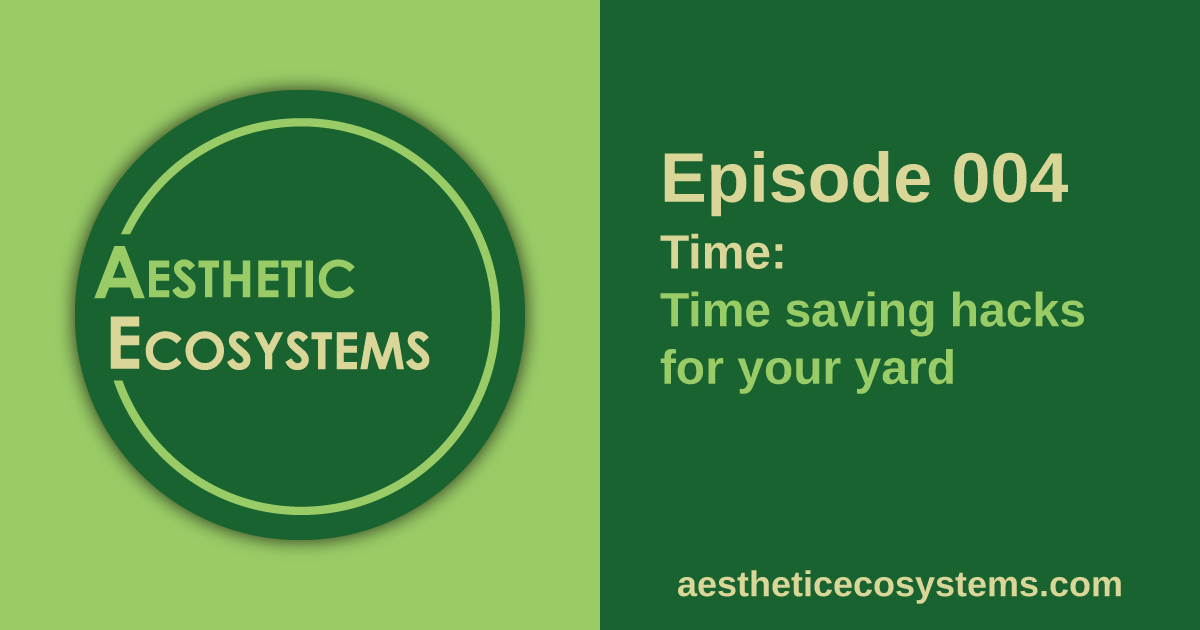
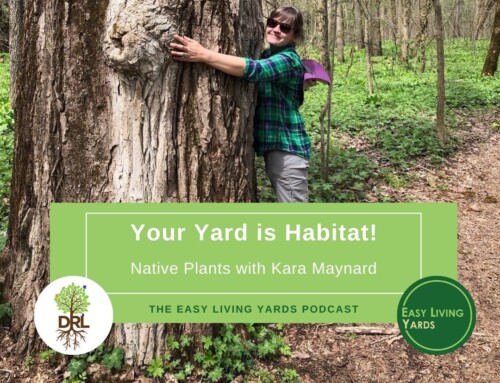

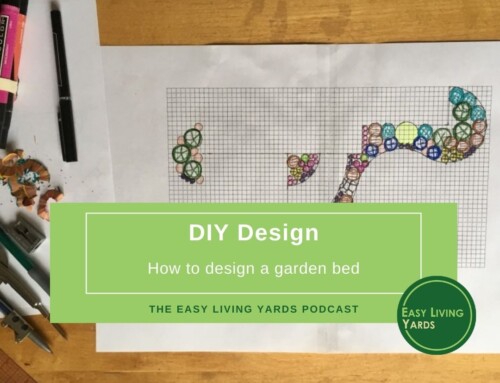

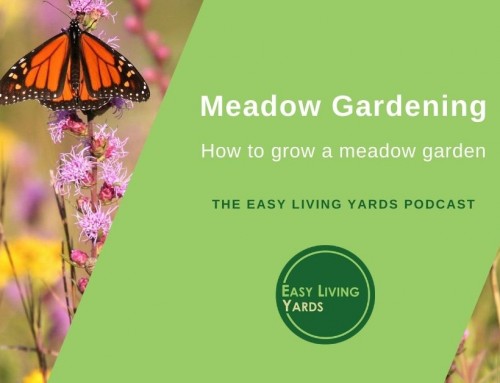
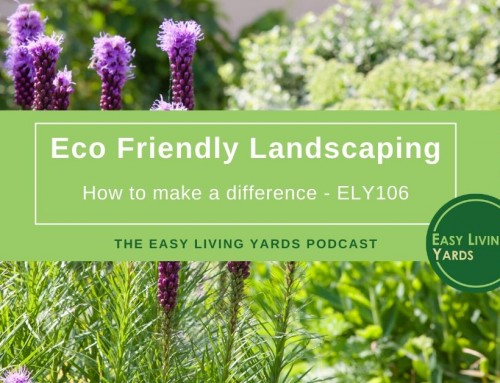
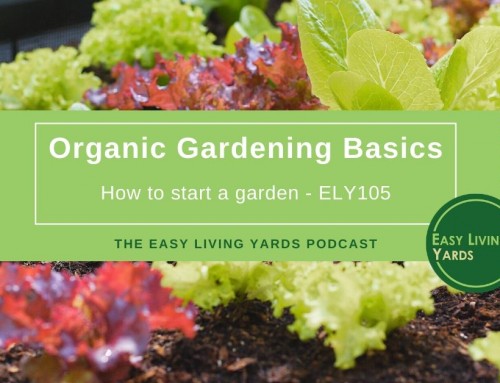
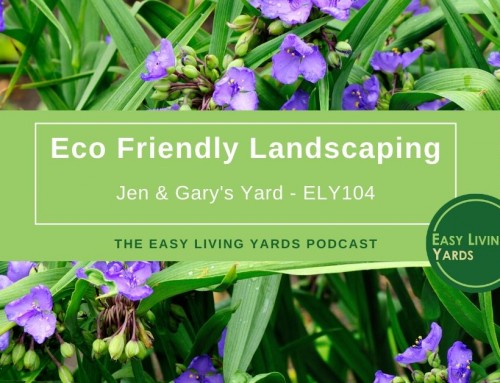
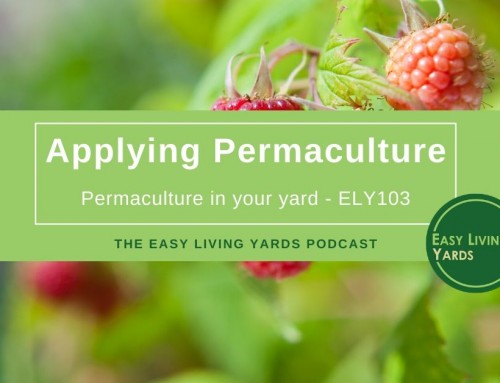
Leave A Comment